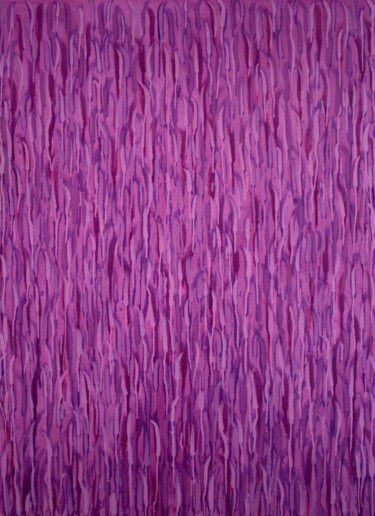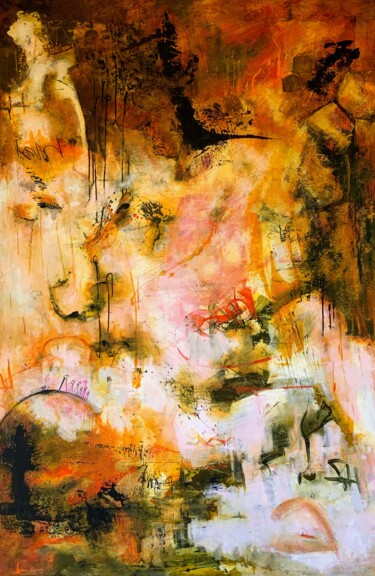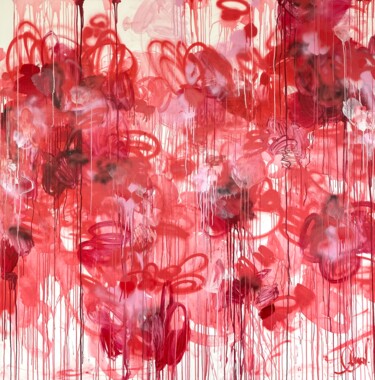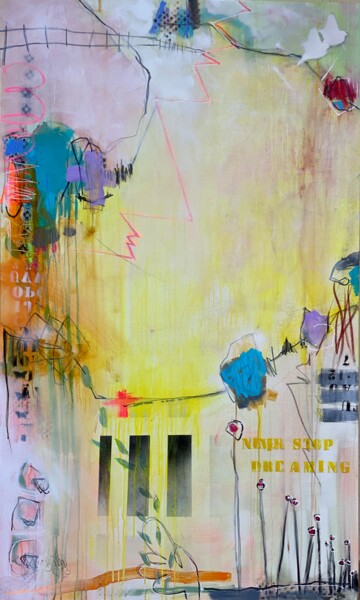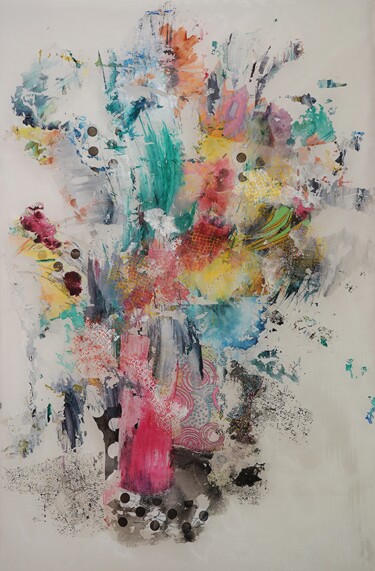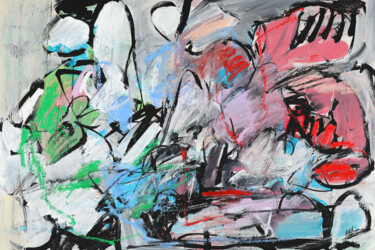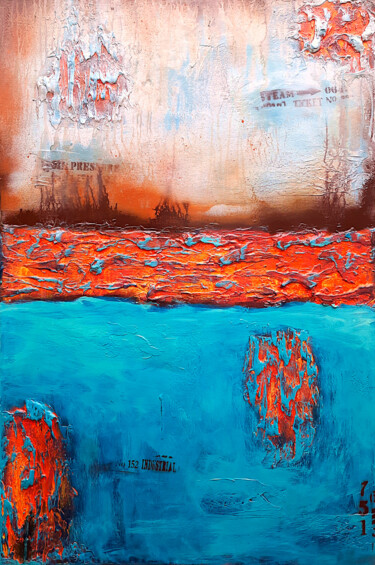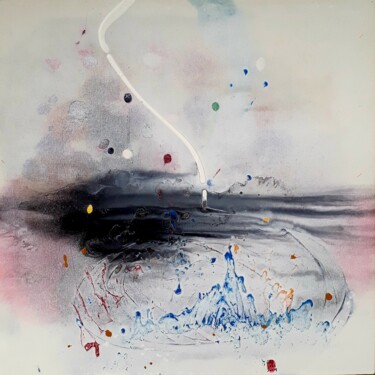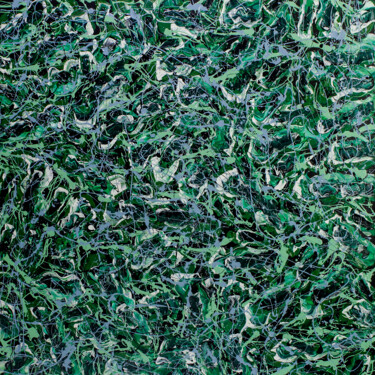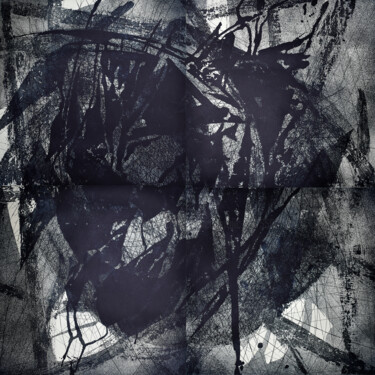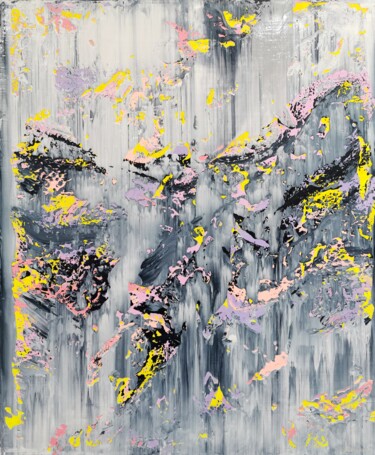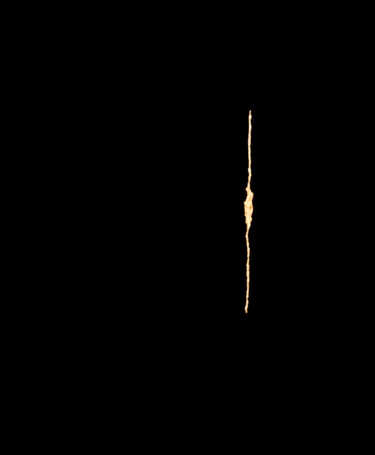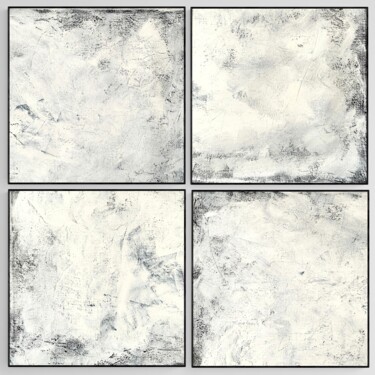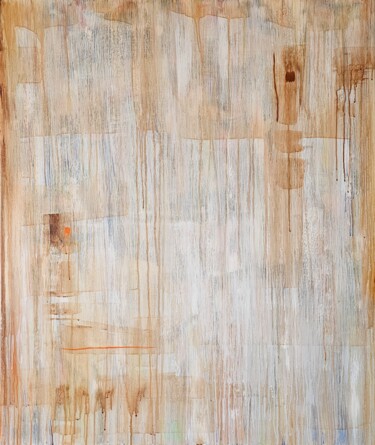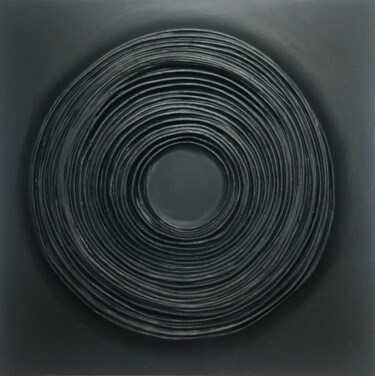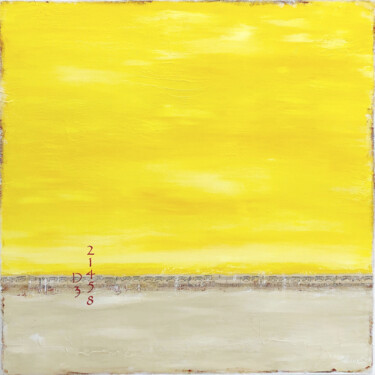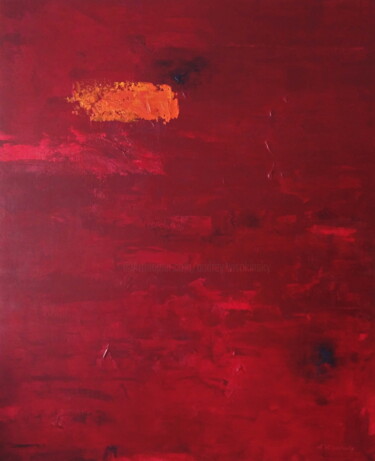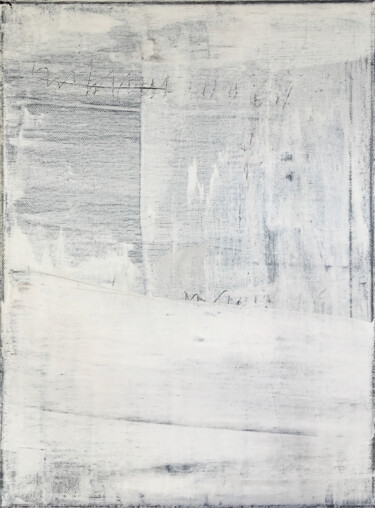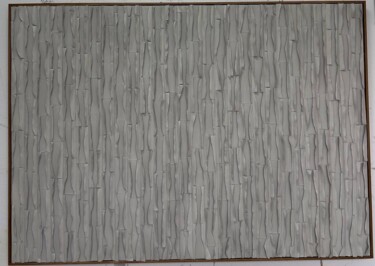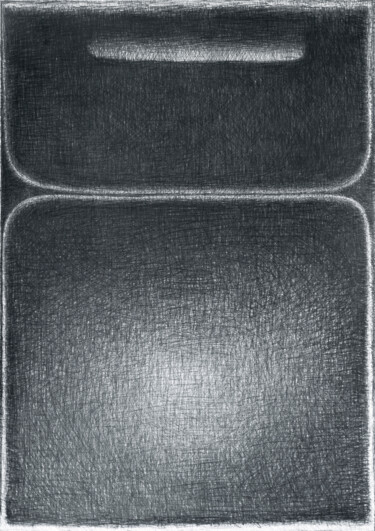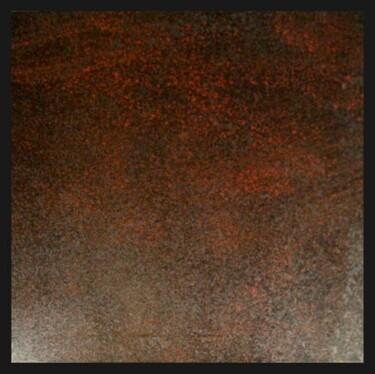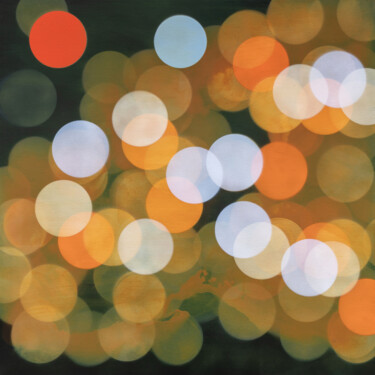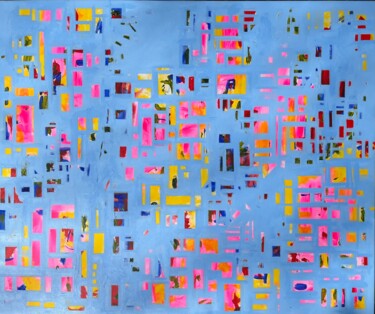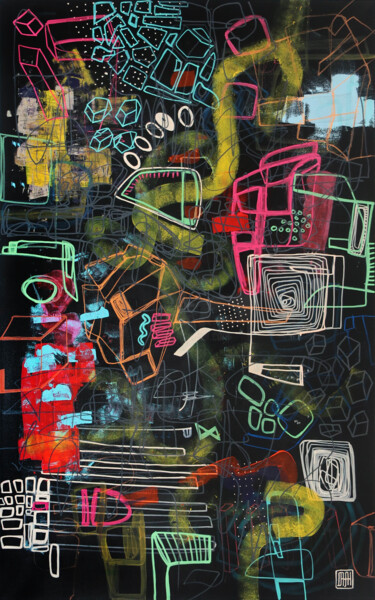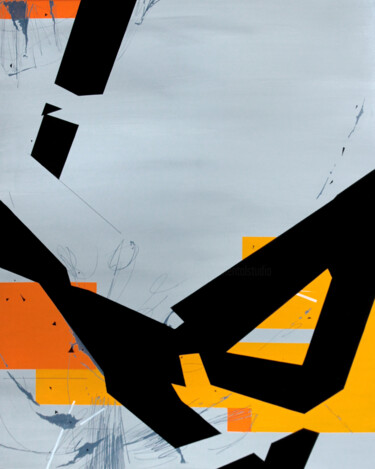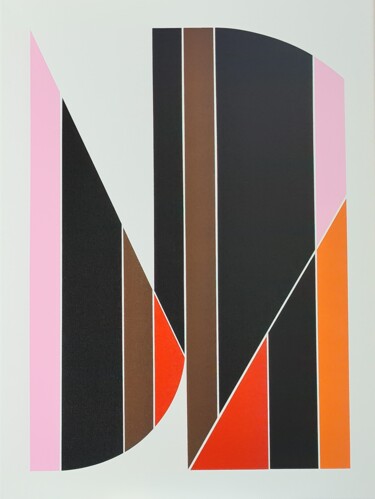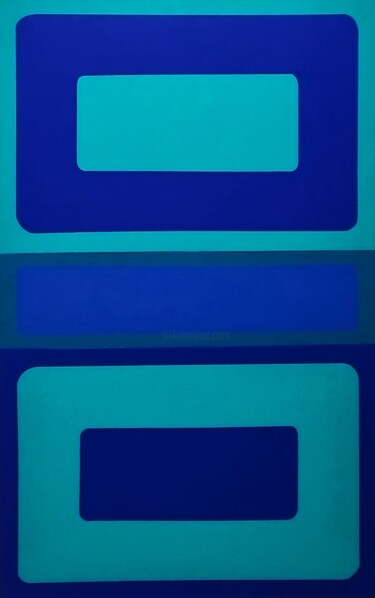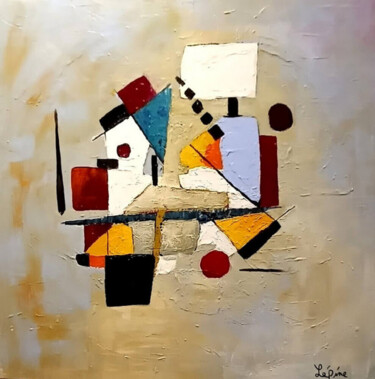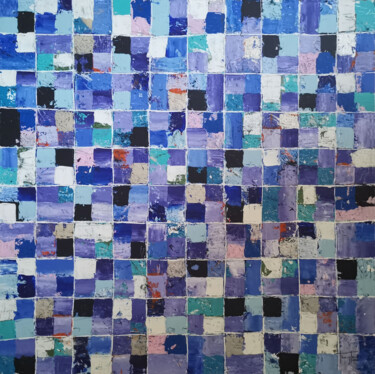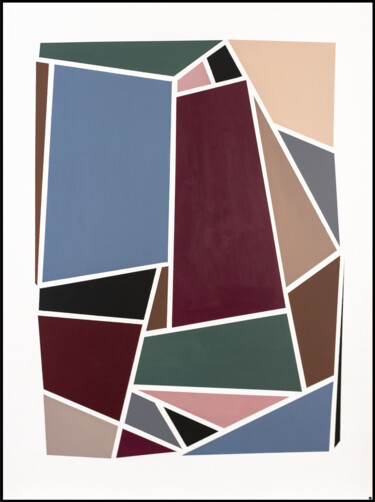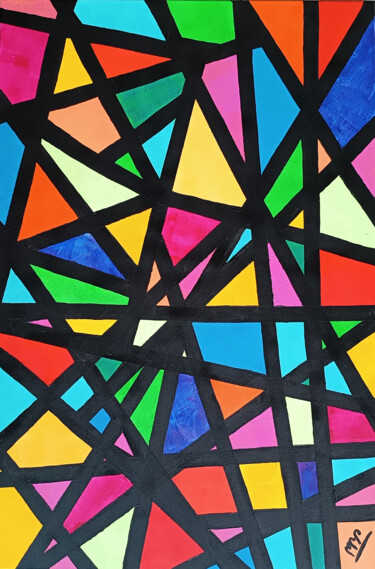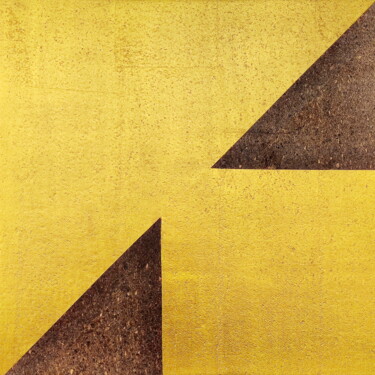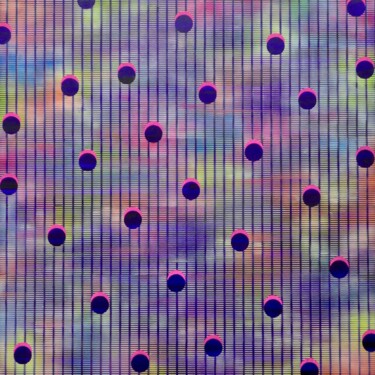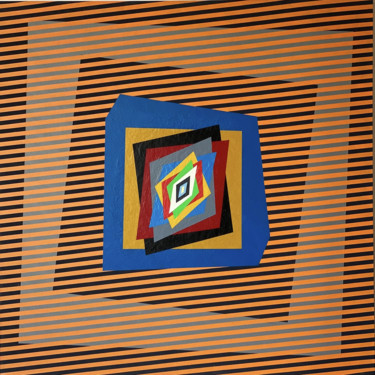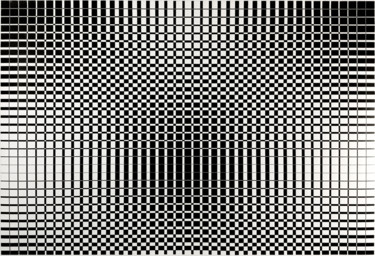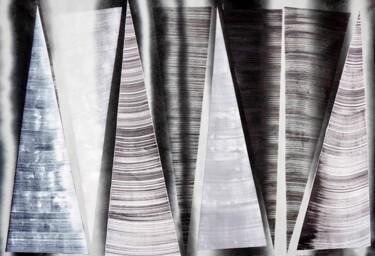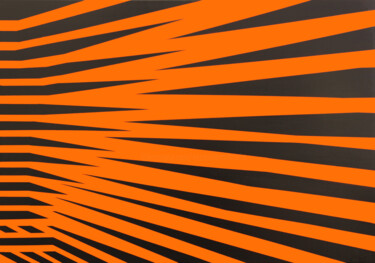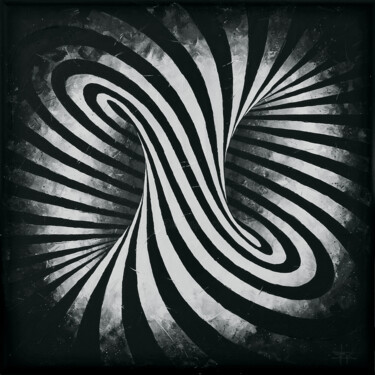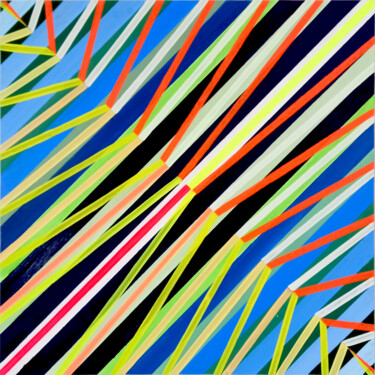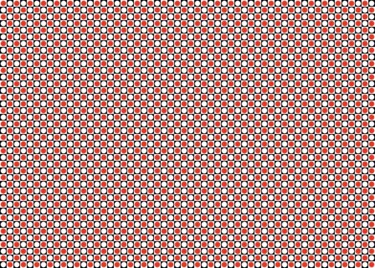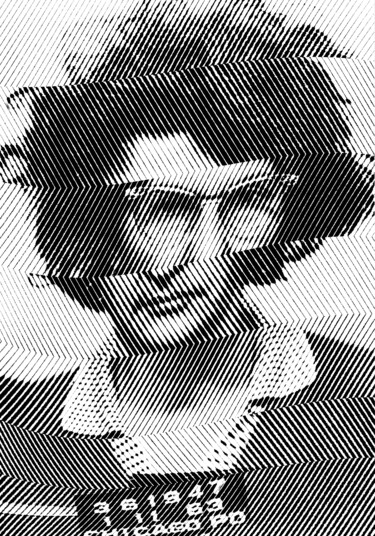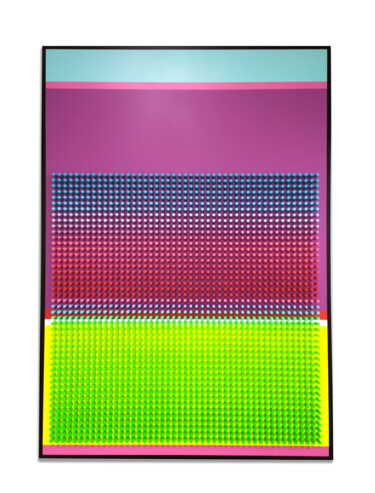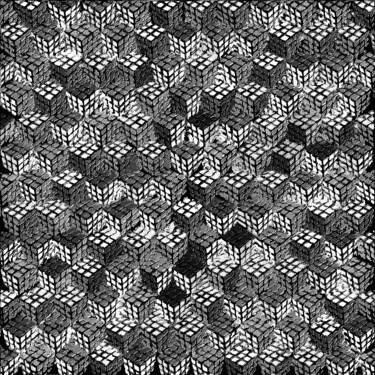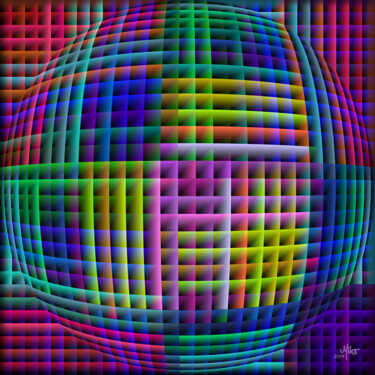Abstract art represents one of the most fascinating and varied realms in the history of the visual arts, where conventional forms and realistic perspectives give way to pure shapes, colors and configurations that speak directly to the soul. It is possible to embark on a comprehensive journey, intended to exhaustively explore the major abstract movements, which have shaped the artistic landscape from the early 20th century to the present. This will be illustrated through the presentation of a number of artworks by Artmajeur's artists, who will define each non-figurative style, starting from Lyrical Abstraction and ending with Minimalism.
 PROMISCUOUS COLORS (2023)Painting by Stefan Fiedorowicz
PROMISCUOUS COLORS (2023)Painting by Stefan Fiedorowicz
Lyrical Abstraction
Lyrical abstraction is an art movement that emerged in the postwar period, exploring personal expression through abstract painting. One of the main pioneers of this style was Vasily Vasil'evič Kandinsky, considered one of the fathers of abstraction. Kandinsky explored the expressive potential of colors and forms, profoundly influencing lyrical abstraction with his emphasis on free and personal expression. This movement found fertile ground especially in Paris, where artists from around the world helped define and evolve the concept of lyrical abstraction, interacting with the local and international art scene.
Lyrical abstraction is characterized by its emotional and intuitive approach to painting, with an emphasis on personal expression and spontaneity. This style often features free and fluid brushwork and vibrant use of color to convey a range of emotions and moods. Unlike geometric abstraction, which focuses on rigid and calculated forms, lyrical abstraction allows for more fluid and organic compositions, often resulting in abstract works that suggest rather than delineate forms. This movement seeks to capture the artist's emotional experience, often resembling a visual form of poetry, hence the term “lyrical.” The overall effect is one of dynamism and depth, inviting viewers to interact with the work on a deeply personal level.
“Promiscuous colors,” painted by Artmajeur artist Stefan Fiedorowicz, may be manifest in the tradition of lyrical abstraction, as its variety of shapes and signs, intent on floating a white, textured background, suggest the emergence of mind-generated memories and experiences. In fact, the composition does not adhere to a rigid form; rather, it allows the elements to interact freely and without constraint, much like the way memories and sensory experiences are woven into our consciousness. For all intents and purposes, the artist admits that the work in question reflects, both his internal emotional struggles and his nocturnal “paranoia,” in order to share them with the viewer, who is always ready to empathize. “Promiscuous colors” also refers to John Locke's philosophy, particularly the concept of “Tabula Rasa,” which suggests that individuals are born without innate mental content and that all knowledge comes from experience and sensory perception. The latter aspect further links the painting to the stylistic features of lyrical abstraction, making us further reflect on the development of man's inner world.
 A NEW IDEA OF MALEVICH'S "RED SQUARE" (2024)Painting by Tatiana Yasin
A NEW IDEA OF MALEVICH'S "RED SQUARE" (2024)Painting by Tatiana Yasin
Constructivism and Suprematism
In the first two decades of the 20th century, amidst the tumult of revolutionary Russia, emerged two extremely innovative artistic movements: Constructivism and Suprematism. Both played fundamental roles in redefining the aesthetic and philosophical landscapes of art, influencing a series of other movements and leaving indelible marks on modern art. Despite sharing common roots in the fervent Russian avant-garde scene, these movements developed distinct ideologies and visual languages that reflected their unique responses to the contemporary socio-political environment.
Constructivism took shape after the Russian Revolution of 1917, conceived as a form of art that could serve the needs of the new Soviet state. With aesthetic roots partly in Suprematism, Constructivism was also influenced by European movements such as Cubism and Futurism. It proposed a radical idea: art should not exist solely for aesthetic contemplation, but should play an active role in daily life and socialist reconstruction. The movement was characterized by a utilitarian approach to art, where artists became designers of a new social order, creating practical objects from furniture to propaganda. Constructivism celebrated the modern, focusing on materials like metal, glass, and plastic and emphasizing a scientific approach to artistic creation.
Developed by Kazimir Malevich in 1915, Suprematism was so named for its assertion of the supremacy of pure artistic feeling over the representation of objects. Malevich's approach stripped away the residues of objective reality in favor of essential geometric forms, such as squares, circles, and lines, floating on minimal backgrounds. Suprematism was driven by the quest for the 'zero degree' of art, exemplified by Malevich's iconic "Black Square", which represented a radical break from past art forms and a movement towards pure abstraction.
While both movements embraced abstraction, their approaches and intentions diverged significantly. Constructivism was fundamentally oriented towards functionality and collective ideals. It was rooted in the material world, with a strong focus on structure and the industrial, reflecting its belief in the artist as an engineer of society. In contrast, Suprematism was more philosophical and introspective, concerned with the exploration of form and space to evoke the spiritual and emotional responses of the viewer.
The artwork I have chosen to present, namely "A new idea of Malevich Red square" by Tatiana Yasin, exclusively embodies Suprematism, evoking the style of Kazimir Malevich's "Red Square". Indeed, at the center of the composition emerges a bold and large red geometric form, ready to dominate the visual field. The square is occupied and delineated by similar geometric forms in black and white, poised to provide a stark contrast, capable of generating a dynamic and engaging visual experience. Indeed, the distinct lines and interaction between the colors produce a sense of movement and depth, even within the typical minimalist approach of Suprematism. Speaking of Tatiana Yasin, her painting does not aim to replicate reality but to convey the essence of emotion and the rhythm of the intangible, in order to challenge conventional boundaries and invite viewers to engage with the unknown of emotional landscapes and introspection. In short, Yasin aims to connect with her viewers on an intuitive level, transcending language and culture, to express herself in the idioms of Neoplasticism, Suprematism, Constructivism.
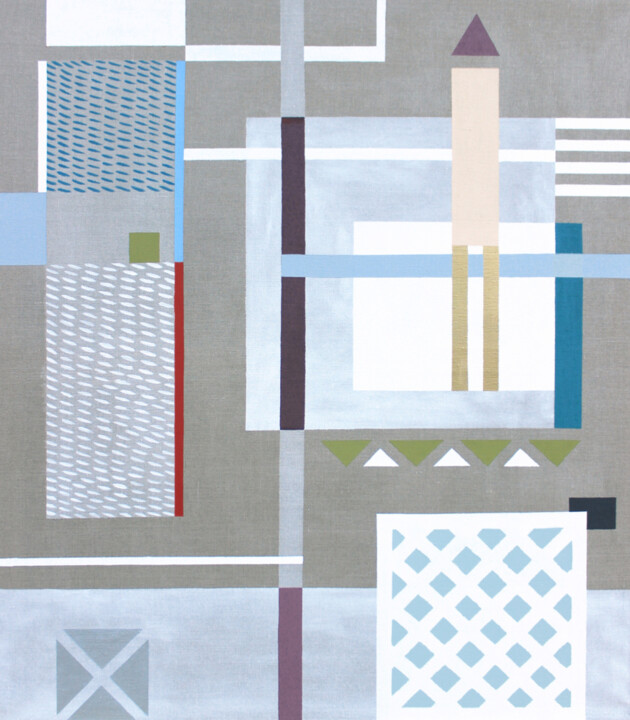 LOOKING FOR BALANCE 7 (2017)Painting by Lucie Jirků
LOOKING FOR BALANCE 7 (2017)Painting by Lucie Jirků
 COLOR TANGLE|INSPIRED BY MONDRIAN (2023)Painting by Peter Ren
COLOR TANGLE|INSPIRED BY MONDRIAN (2023)Painting by Peter Ren
Geometric Abstraction and Neoplasticism
The advent of Neoplasticism at the beginning of the 20th century marked a revolutionary turning point in artistic narrative. This movement, which took hold in the Netherlands in 1917 and was closely associated with the publication of the magazine De Stijl, sought to convey absolute truths through the most fundamental elements of painting: color, line, and form. The Dutch artist Piet Mondrian (1872-1944) is perhaps the most renowned figure associated with this movement, advocating a form of geometric abstraction that utilized pure two-dimensional shapes.
Neoplasticism aimed to eliminate the third dimension and emotional values in painting, contrasting with the ideas of Wassily Kandinsky, who believed in emotional expression through art. Instead, the neoplastic approach focused on line and color, favoring the rectangle as the ideal form for its straight lines and lack of ambiguous curves. The palette of this movement was limited to primary colors — yellow, blue, and red — avoiding shading and naturalistic representations.
While Neoplasticism and Geometric Abstraction share a common ancestry in the realm of non-representational art, their nuances are distinct. Neoplasticism is characterized by a philosophical foundation that saw art as a means for social reform. Its strict adherence to an austere visual language of straight lines and primary colors was intended to reflect universal truths and balance.
Geometric Abstraction, although aligned with the reduction of forms to their geometric essence, does not necessarily carry the same philosophical intent. It encompasses a broader spectrum of practices and can be seen in various contexts, not always seeking to embody a utopian vision or adhere to a rigid set of aesthetic rules.
In essence, Neoplasticism, as well as Suprematism and Constructivism, represent more dogmatic and ideologically oriented subsets of the broader geometric abstract art, which can be more pluralistic and varied in its manifestations and intentions.
A manifesto of Geometric Abstraction is "Looking for balance 7" by Lucie Jirků, a painting that presents a complex interweaving of shapes and lines, intended to shape a balanced yet dynamic composition. The canvas is in fact a patchwork of rectangles, squares, and other geometric shapes, intersected, or simply juxtaposed, by straight lines placed on the surface. These abstract figures, varying in size and color, present a palette that includes shades of beige, gray, blue, green, and a touch of red. Regarding the neoplastic work, "Color Tangle | inspired by Mondrian" by Peter Ren, as revealed in the title, was influenced by the work of the Dutch master, to the extent of reflecting a close fusion between architectural precision and artistic expression. The Artmajeur painter, who actually has a background in architecture and interior design, brings a multidisciplinary approach to painting, evident in the meticulous arrangement of geometric shapes and the bold use of primary colors. Additionally, it can be added that the artist's stated intention is to choose each line and hue "not only for its aesthetic impact, but also for its potential to stimulate the intellect and evoke spiritual healing".
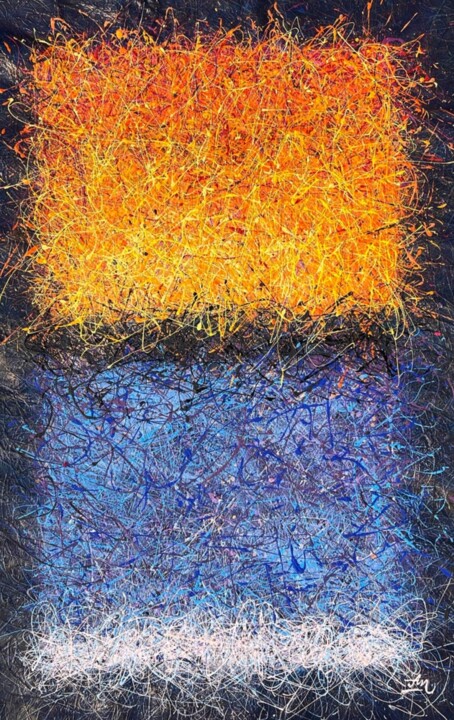 ROTHKO INSPIRED - NOW’S THE TIME (2024)Painting by Nadiia Antoniuk
ROTHKO INSPIRED - NOW’S THE TIME (2024)Painting by Nadiia Antoniuk
Informal Art and Abstract Expressionism
In the aftermath of World War II, two movements emerged in the art world: Abstract Expressionism and Informal Art. Although they arose from different cultural contexts, they shared a common thread in responding to the atrocities and traumas of war, albeit in distinct ways.
Abstract Expressionism, primarily rooted in New York, was characterized by its emphasis on the artist's individual expression of emotions and universal themes. Influenced by Surrealism and leftist politics, Abstract Expressionists saw art as a means to delve into the depths of the unconscious and address existential questions. The movement encompassed various currents, including Action Painting and Color Field. Action Painting, epitomized by artists like Jackson Pollock, emphasized the physical act of painting as a form of spontaneous expression. Artists dripped, poured, and splattered paint onto canvases, creating dynamic compositions that captured the energy of the artistic process itself. This approach reflected a desire to break free from traditional compositional constraints and embrace the instinctive and raw nature of creativity. In contrast, Color Field painting, exemplified by artists like Mark Rothko and Helen Frankenthaler, focused on large expanses of color to evoke emotional and spiritual responses. By eliminating representational elements and allowing color to become the primary vehicle of expression, Color Field artists sought to create immersive and meditative experiences for viewers.
On the other side of the Atlantic, the related Informal Art emerged as a response to the chaos and uncertainty of the post-war era. Coined by critic Michel Tapié, Informal Art encompassed a wide range of styles united by the rejection of traditional forms and the adoption of anti-compositional techniques. Artists from Europe, America, Japan, and beyond explored gestural abstraction and spontaneity inspired by Surrealism as means to confront the existential anguish of the period.
Regarding the analysis of the artwork, "Rothko inspired - now's the time" by Nadiia Antoniuk is a vivid and energetic painting. This example of Color Field art transcends Rothko's more typical defined rectangles of color and soft edges, alluding to a greater emotional intensity and attention to chromatic relationships. The top section of the painting is indeed dominated by a "cluster" of orange and yellow, which, with its intricate web of lines, also seems to draw inspiration from Pollock's dynamic dripping technique. Below this vibrant explosion of warm colors, instead, there is a contrasting juxtaposition of blue, ready to fill the lower part of the canvas, almost reminiscent of the depths of an ocean or the expanse of a night sky. At the base, the artwork presents a horizontal strip of white, which could be interpreted as a peaceful resolution to the turmoil above, perhaps allusive of the crest of a wave, with its foamy appearance, intended to bring texture contrast to the piece. Overall, the painting represents a fusion of influences, taking the emotional weight and simplicity of Rothko's color fields, and the dynamic gestural techniques of Pollock's action painting.
BLACK LACE (2021)Digital art by Kurotory
Op art
Op art, short for "Optical Art," emerged in the 1950s as a dynamic movement fueled by artists' fascination with perception, optical effects, and illusions. Rooted in the exploration of visual phenomena, Op art pushed the boundaries of traditional artistic expression, tapping into new interests in technology and psychology. This movement, characterized by abstract patterns and stark contrasts, aimed to capture and confound the viewer's eye.
Historically, Op art emerged alongside Kinetic Art, both sharing a fascination with movement and perception. The seminal exhibition "Le Mouvement" in 1955 at the Galerie Denise Rene marked the beginning of this artistic exploration. However, it was the 1965 exhibition "The Responsive Eye" at the Museum of Modern Art in New York that thrust Op art into the public spotlight, sparking a craze for its designs in fashion and media.
Key features of Op art lie in its manipulation of visual perception through abstract patterns and high-contrast compositions. Often executed in black and white to maximize impact, these artworks create optical illusions that challenge the viewer's sense of depth and movement. The emphasis on illusion and perception suggests connections to older artistic techniques such as trompe l'oeil and anamorphosis, also reflecting the modern era's fascination with technology and consumer culture.
An example of Op art is "Black lace" by Kurotory, a digital artwork where the optical illusion of a three-dimensional "lace wheel" emerges in black and white. Indeed, Kurotory, an artist who combines traditional techniques with digital media, has created a design that appears to spin and pulsate, synthesizing the use of mathematical principles and optical manipulation. Additionally, the intricacy of the "lace pattern" also suggests a meticulous arrangement of lines and curves, conceived to create a hypnotic vortex, whose complexity of design intensifies towards the center, where the eye is drawn into what seems like an endless spiral. Such effect recalls the visual phenomena explored by Op art pioneers like Victor Vasarely and Bridget Riley, whose artistic inquiry has caused the viewer's perception to oscillate between the flatness of the medium and the suggested depth of the image.
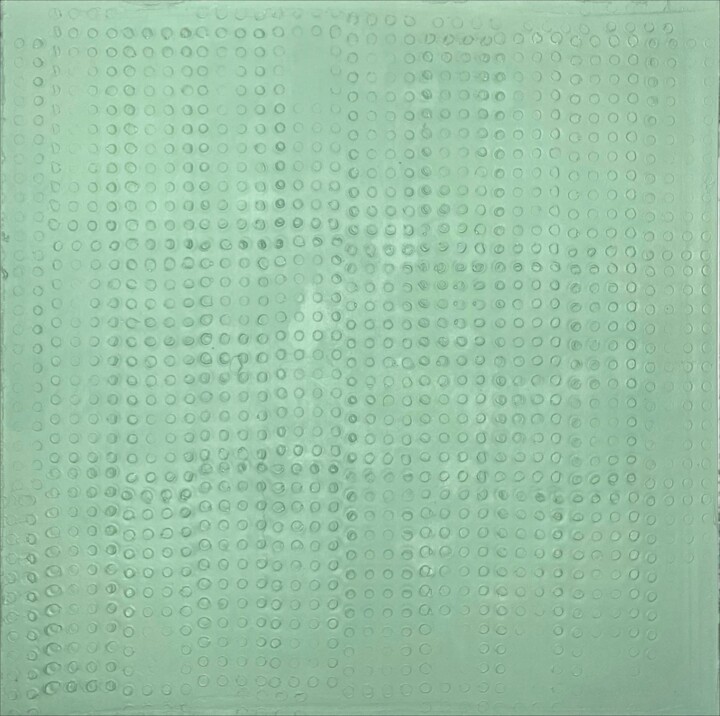 OLIVE OCCASIONS (2022)Painting by Gustaf Tidholm
OLIVE OCCASIONS (2022)Painting by Gustaf Tidholm
Minimalism
Minimalism emerged in New York in the early 1960s as a response to what artists perceived as the fatigue and academicism of recent artistic trends. Rejecting the excessive expressions of Abstract Expressionism, a new generation of artists sought to create works that privileged the simple and the geometric over the dramatic. Sculptures made with industrial materials became a hallmark of the movement, emphasizing anonymity and avoiding obvious symbolism.
At the heart of Minimalism was a deliberate rejection of expression, as artists distanced themselves from the biographical and metaphorical associations prevalent in Abstract Expressionism. Instead, they focused on creating smooth and geometric works that challenged traditional notions of aesthetic appeal. Inspired by Russian Constructivism and Marcel Duchamp's ready-mades, Minimalists embraced modular fabrication and industrial materials, creating works that resembled factory-produced goods rather than finely crafted art.
One of the distinctive features of Minimalism was its emphasis on the physical space occupied by the artwork. Through simple and repeated geometric forms and prefabricated materials, Minimalist works forced viewers to confront the organization and scale of the shapes, as well as their own physical and visual responses. This approach aimed to break down the traditional distinctions between painting and sculpture, challenging the formalist dogma espoused by critics such as Clement Greenberg.
The trend of the 1960s is well captured by "Olive occasions" by Gustaf Tidholm, an exercise in minimalist abstraction that presents a surface aimed at playing with the viewer's perception. Painted in a subtle olive green, a color often associated with harmony and peace, the piece conveys feelings of tranquility and optimism. The surface of the artwork is textured with circles, offering a depth that varies depending on the viewer's perspective and how light interacts with the painting. Gustaf Tidholm, the contemporary Swedish painter behind this work, channels experiences of daily interactions and the creative process itself into his art. In fact, his minimalist expression is not simply intended to allude to pure synthesis and geometry, as it aspires to communicate concrete emotions such as joy, hope, happiness, peace, and faith. These feelings, subtly woven into the fabric of the piece, lead to natural contemplation and engagement from the observer, who quietly and relaxedly admires the simplicity of the monochrome.

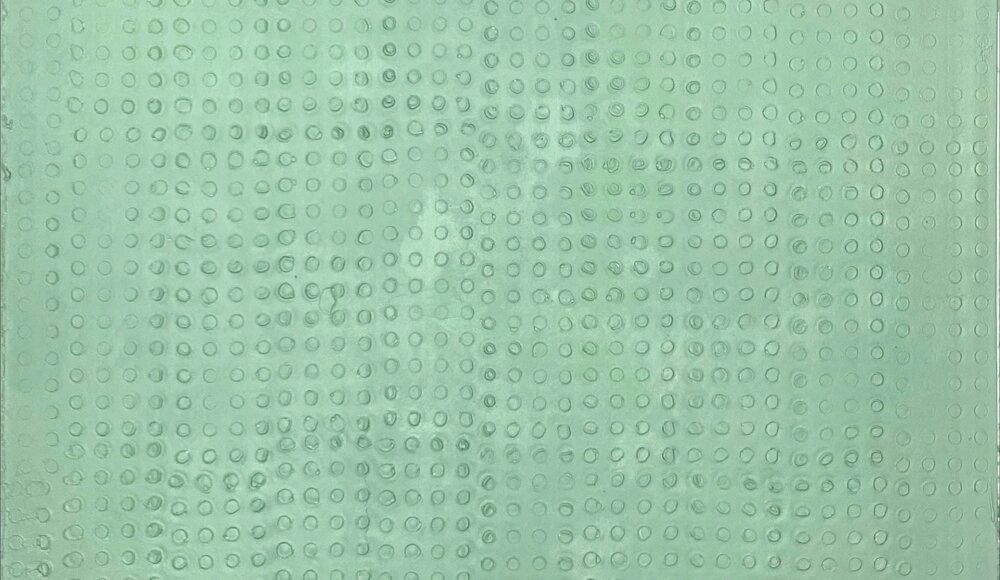

 Olimpia Gaia Martinelli
Olimpia Gaia Martinelli
